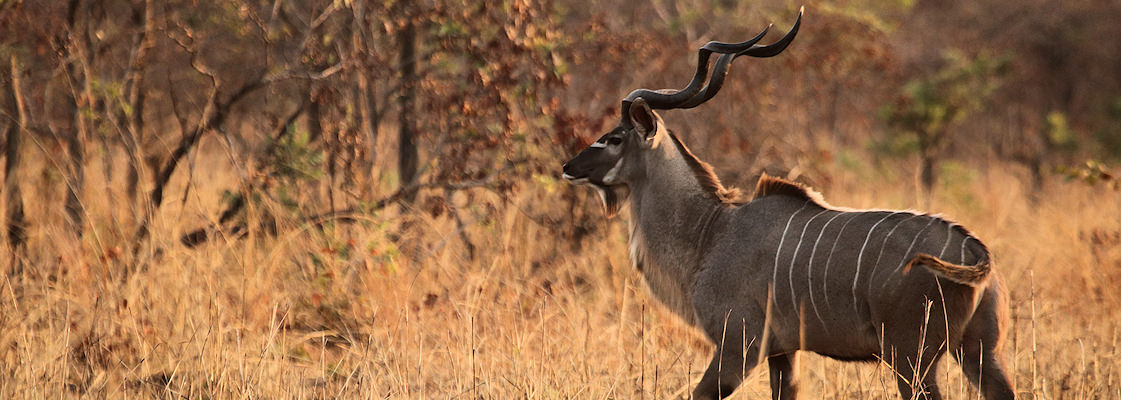The terrain on which your hunt is conducted will influence the hunting methods employed, the average distance over which shots are taken, and the most appropriate rifle calibers to use.

When you book a hunt in South Africa, it will typically occur in a savanna area, which can be densely wooded or sparsely dotted with trees and clusters of trees. On the other end of the spectrum are the vast open plains typical of the central parts of the country.
Most of the northern and eastern parts of the country are wooded savannas, characterized by grassland interspersed with scattered trees and shrubs. It is one of the most prominent biomes in South Africa. As a general rule of thumb, the density of woodland increases from west to east because of higher rainfall. These areas range from the Lowveld to the Limpopo Bushveld and the northern parts of KwaZulu. In the west, it extends to the fringes of the Kalahari, and in the south, it extends to large parts of the Eastern Cape Province.
These are the primary hunting areas in the country ideally suited to walk and stalk hunting. The availability of cover rarely necessitates shots longer than 150 yards; the quarry can often be stalked to within 100 yards if your professional hunter and tracker are mindful of wind direction, cover on the approach, and if the stalk is quiet. Slower calibers and ammo with a velocity of below three thousand feet per second are ideal, as the fast and wildcat calibers are more easily deflected when traveling through vegetation. Bowhunters have ample opportunity for tree hides, and many game farms and conservation areas have dedicated bow hides in areas with a high frequency of animal movement.
Most, if not all, of the plains game species available in South Africa, can be hunted in these regions. Favorites like kudu, impala, sable, waterbuck, wildebeest, and zebra occur in substantial numbers.
The central part of the country is characterized by vast open plains with scattered hills and mountain ranges in the south and east. Many species favor the open grassland, notably the black wildebeest, blesbok, and springbok, which have four color variations: common, black, white, and copper. Mountain reedbuck and grey rhebuck provide challenging hunts in the mountainous terrain.
Glassing from an elevated position is often the best way to identify herds; the hunt must be planned carefully, as terrain makes stalking much more complicated than in savanna areas. Shots are typically long, the norm being between three and four hundred yards. High-velocity rounds and wildcat calibers come to their own in this part of the country.
Safaris with a duration of seven or fewer days should ideally be conducted in only one area. When booking a safari of ten to fourteen days, it is advisable to savor a hunt in both regions to appreciate the diversity of terrain and the hunting experiences offered in South Africa. Traveling between areas and camps where we offer safaris in the bushveld and eastern Free State requires an overland journey of four to five hours. If you are a bowhunter, the success rate and opportunities are much better in wooded savanna areas.